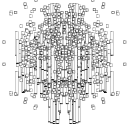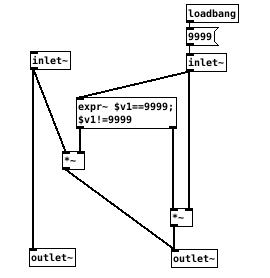@Obineg said:
one reason why i find it "strange" is that it causes an inconsistency between the externals paradigm and the patch paradigm, since you cant have inlets in your abstractions which takes both signals and messages.
In fact, you can connect a control to a signal-rate inlet~.
This abstraction is kind of dumb, but it makes the point:

Then, here, the left-hand side patches random numbers (generated in the control domain) into the slot defined by the signal-rate [inlet~]. And, the right-hand side patches a signal-rate LFO. They both work.

What would not work is to patch a control and a signal in simultaneously: the signal will overwrite the control.
about your example... no idea how that same implementation would perform in pd? but in max, if you´d cut off a signal objects from DSP, for example by shutting down a subcircuit, the last value of the now stopped signal would remain in the input buffer of all connected objects.
It appears that, when you connect nothing to [inlet~], it already holds its last value and doesn't reset. You can test that, in the sample patch above, by deleting the signal connection into the right-hand side instance of the 0529 abstraction. If it went to 0, then the right channel would be silent. Instead, it holds frequency.
So it seems it already works as you specify. (That's different from what whale-av said -- which is understandable -- as others point out, Pd help patches lost some key details so it's easy to get confused about this kind of fine print.)
This also means that there really is no reliable way to tell if something is connected or not. You can specify an initial value for the [inlet~], but if you connect something and then delete the connection, this initial value will be lost and not reset.
hjh








